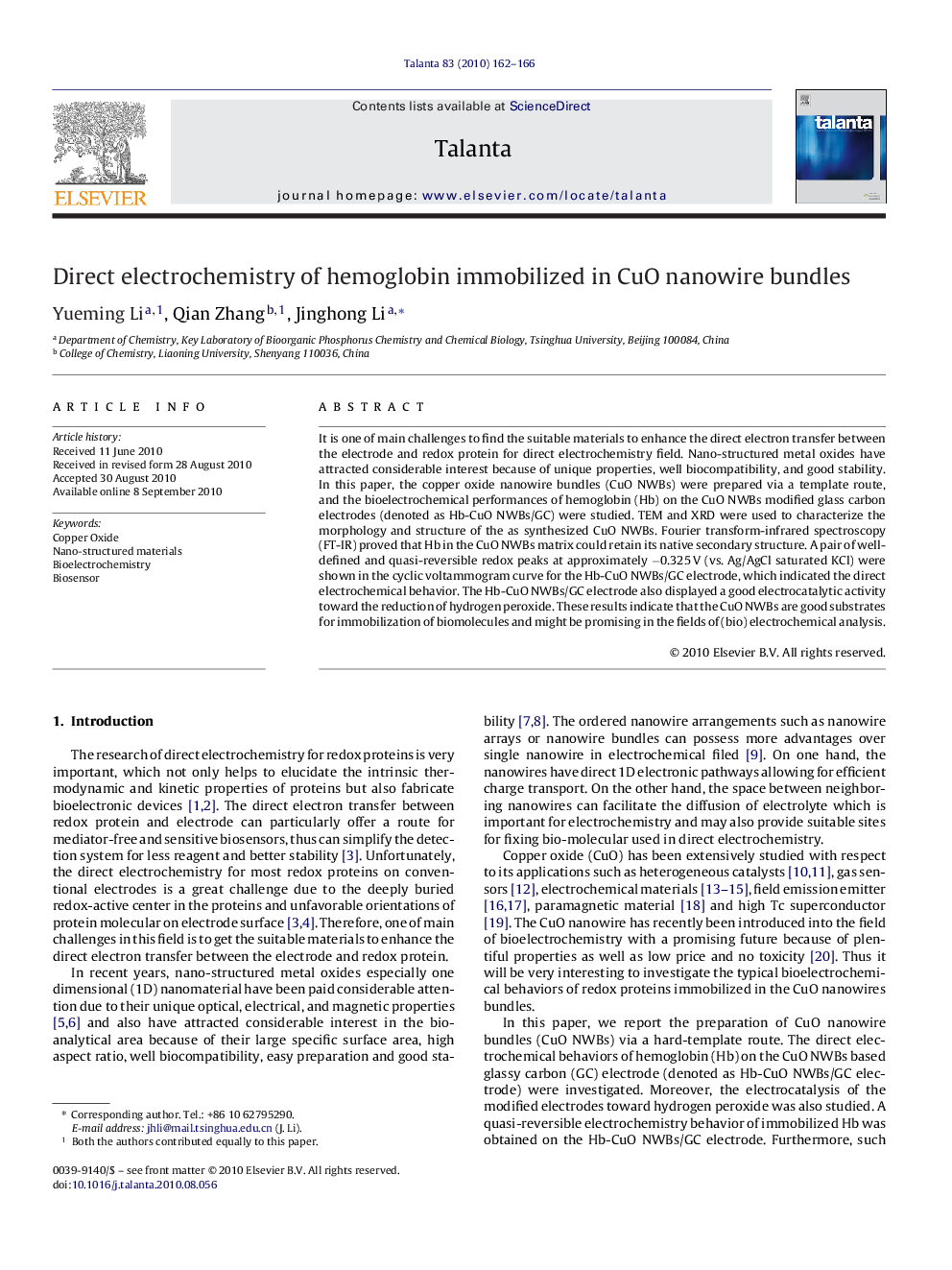| Article ID | Journal | Published Year | Pages | File Type |
|---|---|---|---|---|
| 1242475 | Talanta | 2010 | 5 Pages |
It is one of main challenges to find the suitable materials to enhance the direct electron transfer between the electrode and redox protein for direct electrochemistry field. Nano-structured metal oxides have attracted considerable interest because of unique properties, well biocompatibility, and good stability. In this paper, the copper oxide nanowire bundles (CuO NWBs) were prepared via a template route, and the bioelectrochemical performances of hemoglobin (Hb) on the CuO NWBs modified glass carbon electrodes (denoted as Hb-CuO NWBs/GC) were studied. TEM and XRD were used to characterize the morphology and structure of the as synthesized CuO NWBs. Fourier transform-infrared spectroscopy (FT-IR) proved that Hb in the CuO NWBs matrix could retain its native secondary structure. A pair of well-defined and quasi-reversible redox peaks at approximately −0.325 V (vs. Ag/AgCl saturated KCl) were shown in the cyclic voltammogram curve for the Hb-CuO NWBs/GC electrode, which indicated the direct electrochemical behavior. The Hb-CuO NWBs/GC electrode also displayed a good electrocatalytic activity toward the reduction of hydrogen peroxide. These results indicate that the CuO NWBs are good substrates for immobilization of biomolecules and might be promising in the fields of (bio) electrochemical analysis.
